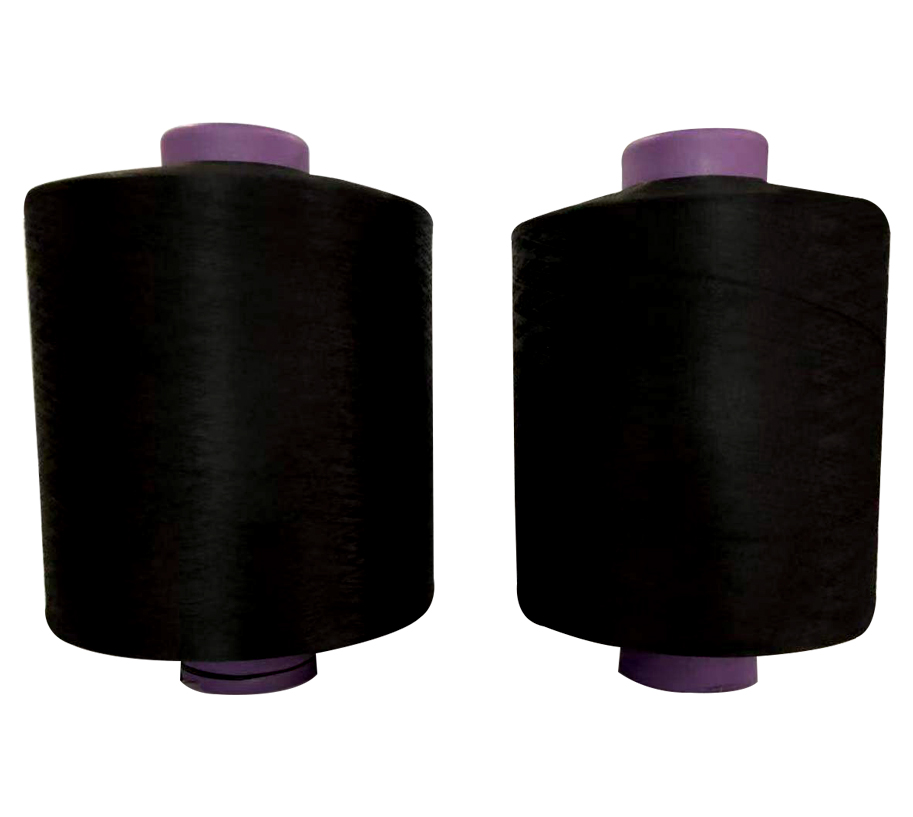Navy/Grey 150D/36F DTY Yarn 99.99% Polyester Anti-pilling Yarn for Sewing Materi...
See DetailsCombing, drawing, roving process
1.Combing process
The combing process channel and the top combing brushes of the cylinder are not smooth and clean. There are burrs and hanging flowers in the channel of the coiling plate, resulting in the production of silk. When the cloth surface is disassembled and analyzed, the fiber is short and has no kinks, and the color is yellow.
Control measures: Carefully check every shift and handover, and timely feedback when problems are found.
2.drawing process
The scraper or velvet flower of the draw frame is pressed in by the roller, and the cloth surface is also slub-shaped, but such slubs are densely distributed. The slubs are large and heavy. When the slubs are decomposed, of them are short pile and velvet. Slate flower, the color is yellower and darker, it is easy to distinguish in the analysis.
Control measures: regularly check the condition of the fleece of the draw frame to prevent the accumulation of fleece flowers; do light cleaning work, do it diligently, do it at any time.
3.Roving process
The velvet flower is attached to the top roller before the roving, and the upper and lower aprons of the roving do not turn. The messy fiber, the velvet flower accumulates too much, and it is easy to be attached to the yarn. The cloth surface was slub-like when disassembled and analyzed, and there were kinks Phenomenon, there are messy fibers. After spinning into a spun yarn, the small slub defects are attached to the yarn and can move back and forth, but the yarn sticking to the fiber is hairy, not smooth, and easy to break when pulled easily, and it is easy to distinguish from other processes.
Control measures: check whether the upper and lower aprons of the roving and the pile roller are operating normally at any time, and solve the problems in time.

Post spinning process
Spinning process
In the spinning process, the small slubbed knots form the original white slubby on the cloth surface, that is, the neps (white star) defective cloth, which is also distributed with "gypsophila". Due to the poor heat dissipation of the traveller in the spinning process, it is easy to wedge outward , Increase the fly ring; the model is not matched, the replacement cycle of the traveler is too long, and the winding tension is too large.
The cotton ball defective cloth of the carding process and the neps (white star) defective cloth of the spinning process are often easily confused on the cloth surface, and only the analysis of the dismantling and picking of the yarn can be adopted. The cotton ball defective cloth belonging to the spinning process can be found in small slub defects. The yarn sliver moves left and right, the yarn is continuous, the yarn sliver is smooth, and the twist is normal, but the small slub defects cannot be removed.
According to the analysis method of dismantling and picking yarn and the concentration of spinning Machines, the "gypsophila" cotton ball defect fabric in this example is the spinning process. The traveller heat dissipation is poor, causing the yarn to be scraped by the inner ring of the traveler like a blade. Scraped into details. Details are produced where the yarn sliver has been scraped. The unscraped yarn is covered by the excess neps of the scraped yarn, and thick knots and neps are generated. Because the traveler linear speed is about 40m/s, Therefore, the thick knots, neps, and details on the cloth surface are distributed in short fragments of "gypsophila".
Control measures: The number of travellers is selected, the replacement cycle and the principle of weight control shall be subject to maintaining the normal air ring.
Winding and self-winding process
The speed of the grooved drum is too fast. For every centimeter of yarn walking in the curved channel of the grooved drum, it will stick to the passage with grease and wax, and then be wound on the yarn. The grooved drum S groove must always check the smooth condition , Otherwise, after this process, the "white star" and "neps" increase exponentially. This "neps" cannot be removed or moved. The yarn is easy to break after light touch. The large amount of such yarn defects can easily to uneven dyeing.
Control measures: Winding, regular cleaning of the trough in the self-winding process.